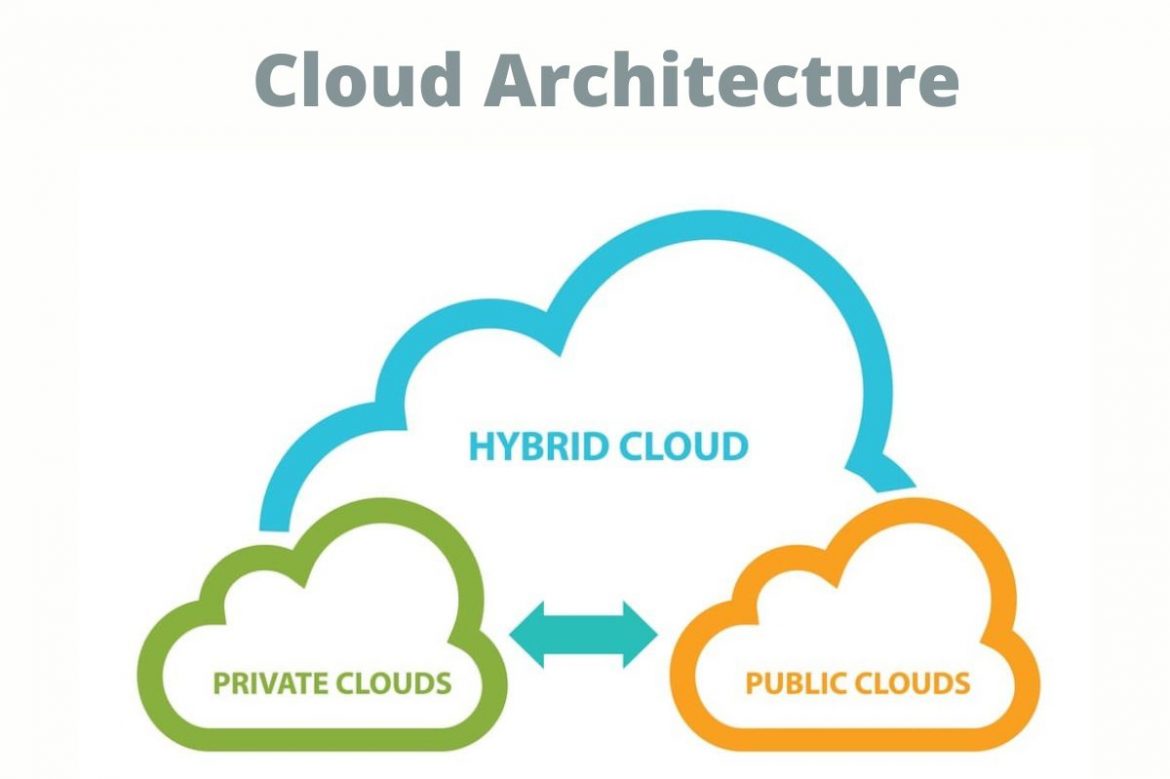Cloud Architecture, Performance, security, scalability, and savings: the concrete benefits of the Cloud are precise. However, not all types of Cloud are the same. To make the most of the characteristics of this technology, every company should know the various distribution models of Cloud services and identify the architecture that best suits its needs: public, private, or hybrid.
Table of Contents
The public Cloud
Cloud providers are companies that own an infrastructure consisting of servers, storage systems, and support resources (such as energy supply and internet bandwidth). In the public Cloud, this infrastructure delivers services to users (the public) via the internet. Customers access these services with an account and using a web browser.
The private Cloud
Companies that want to strengthen security can use a private cloud. In this configuration, hardware and software resources are used by a single company. The latter can choose to host the resources in a proprietary data center or have them stored in Colocation by a service provider. The management of services and infrastructure through a private network allows for an increase in the level of security thanks to firewalls and internal hosting systems.
The hybrid Cloud
As the name already suggests, the hybrid Cloud combines the private and public Cloud characteristics. This happens thanks to technological solutions that allow sharing of information, data, and applications between public and private infrastructures (such as an internal data center) on which the Cloud is based.
Iaas, Saas, Paas: what they are and why they are important
There are different types of services provided through the Cloud. The best-known and most used categories can be reduced to Iaas, Saas, and Paas.
Il Cloud Iaas
Iaas services (Infrastructure as a service) allow the user to share the resources of the powerful network infrastructure of physical and storage servers installed at the supplier’s Data Centers, with redundant security systems and high-performance internet bandwidth. In practice, the Customer “leases” the servers, storage space, and IPs he needs from the supplier and can manage them independently and with maximum flexibility.
Iaas is the cloud model with the highest growth rates, according to Gartner.
He Cloud Saas
Saas ( Software as a Service) is the most widespread form of Cloud.
In this case, the provider hosts and manages an application on its hardware infrastructure. Users can access the application – which in practice is already a finished and complete product – via the internet using a smartphone, PC, or tablet. Services such as ERP, videoconferencing, email, and virtual switchboards fall into this category.
He Cloud Paas
Paas ( Platform as a service) provides companies and developers with an optimized platform to create applications and services on the web. With the Cloud Paas, the user does not have to worry about managing the infrastructure (for example, hardware, operating systems, and IP) and can concentrate exclusively on developing and distributing their products.
How to choose the most suitable provider
The quality of the infrastructure and services offered by Cloud suppliers is crucial for any company’s growth. Therefore, choosing a Cloud provider depends on many factors, including internet connectivity. They are summarized below in a simple vademecum that allows you to navigate the many offers available on the market quickly.
Reliability of the infrastructure
The provider must have an infrastructure capable of delivering high-performance services and offering guarantees on the continuity of the service and the security of user data. The entire data infrastructure of the provider must be redundant locally and geographically with a fault-tolerant system in disaster recovery: in this way, the continuity of the service is guaranteed even in the event of a breakdown or accident. Cloud servers and storage systems must be hosted in secure data centers, possibly located in Italy or within the EU, in order to comply with privacy regulations and the GDPR.
Data management and security
The provider must apply recognized and validated procedures for security management and data protection (e.g., possess an ISO27001 certification). Access to the data centers and systems of the provider and the customer must be protected and controlled. The integrity and availability of the Customer’s data must be guaranteed. The provider should also offer guarantees on privacy protection and data protection, as required by the GDPR.
Interfaces and service management
Cloud services must allow maximum flexibility in the configuration and scaling of servers and storage systems. For this reason, suppliers must provide users with control panels designed to facilitate the autonomous and remote management of services.
Proximity and performance of servers and infrastructure
The provider’s network infrastructure must guarantee high performance and service continuity. For this, the latency times in the transmission and reception of IP packets must be reduced. Choosing an operator that also provides connectivity allows you to take advantage of services with guaranteed QoS.
Transparency and billing
Prices must be clear and based on the actual use of services and resources. The Client must immediately understand the costs and keep them under control in real-time. Invoicing must contain the necessary information in an easily verifiable manner. In this way, transparency is also combined with the typical flexibility of the Cloud.
Service Level Agreement
The provider must provide high-level sales and support services. The provider’s partners, technicians, and consultants must understand the Client’s needs well and provide services tailored to his specific needs. In the event of breakdowns or malfunctions, the user must receive quick answers from people who are prepared to solve problems and ready to intervene. In this case, it is not always advantageous to rely on a huge provider.
Also Read : Importance Of Videos In B2B Marketing




